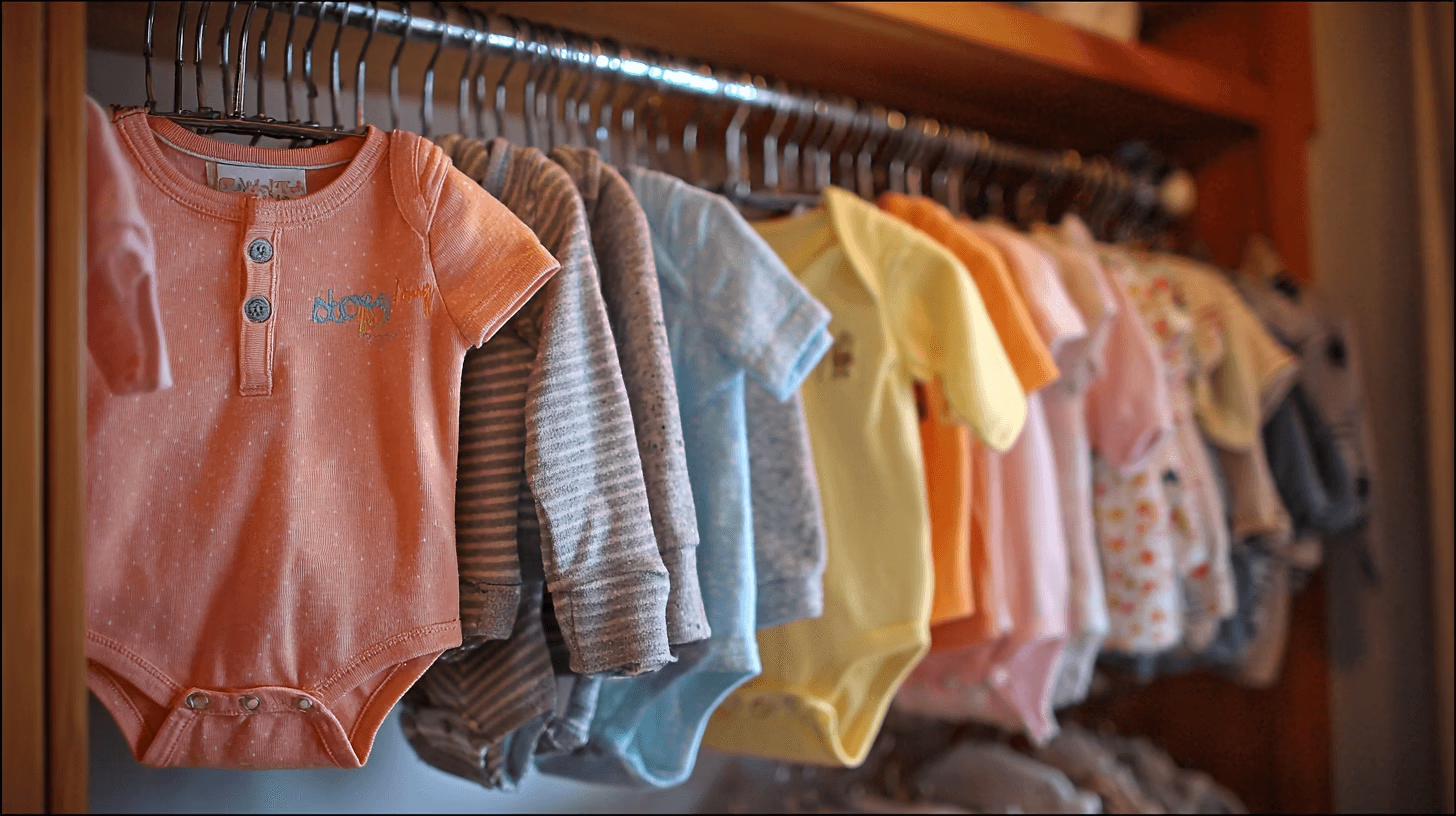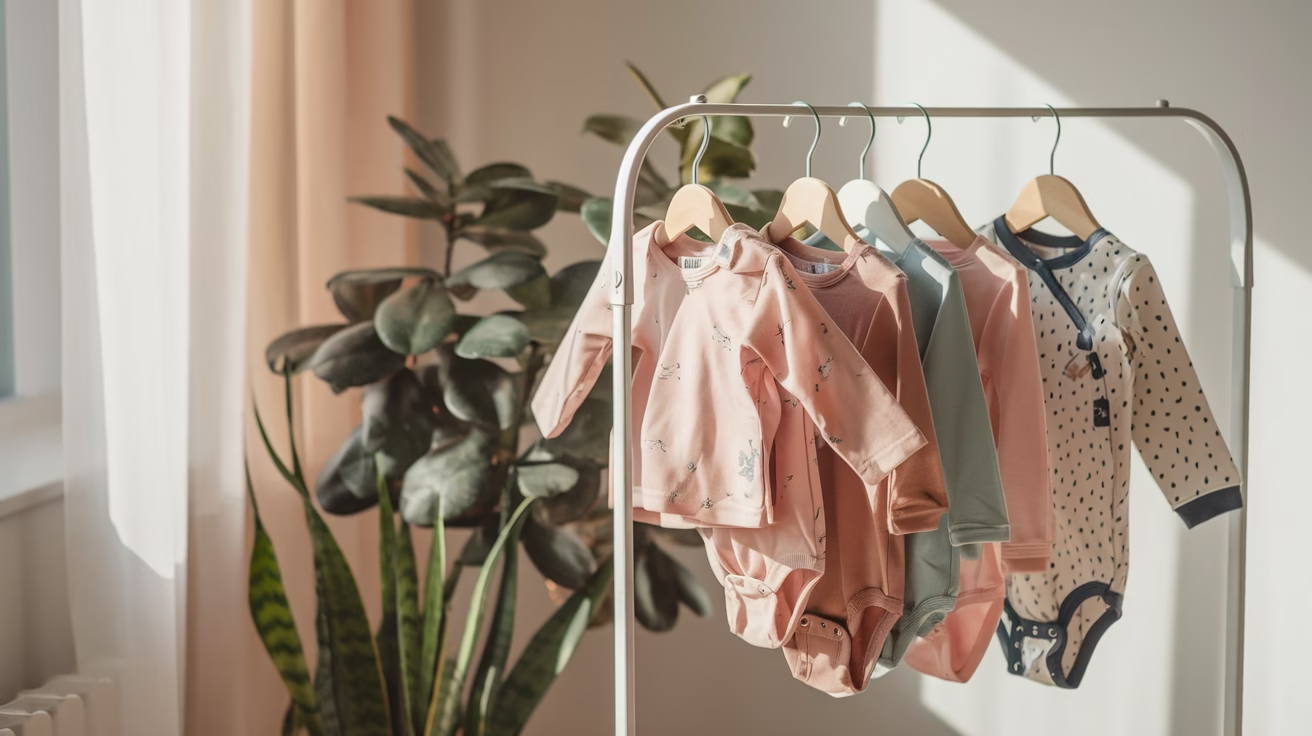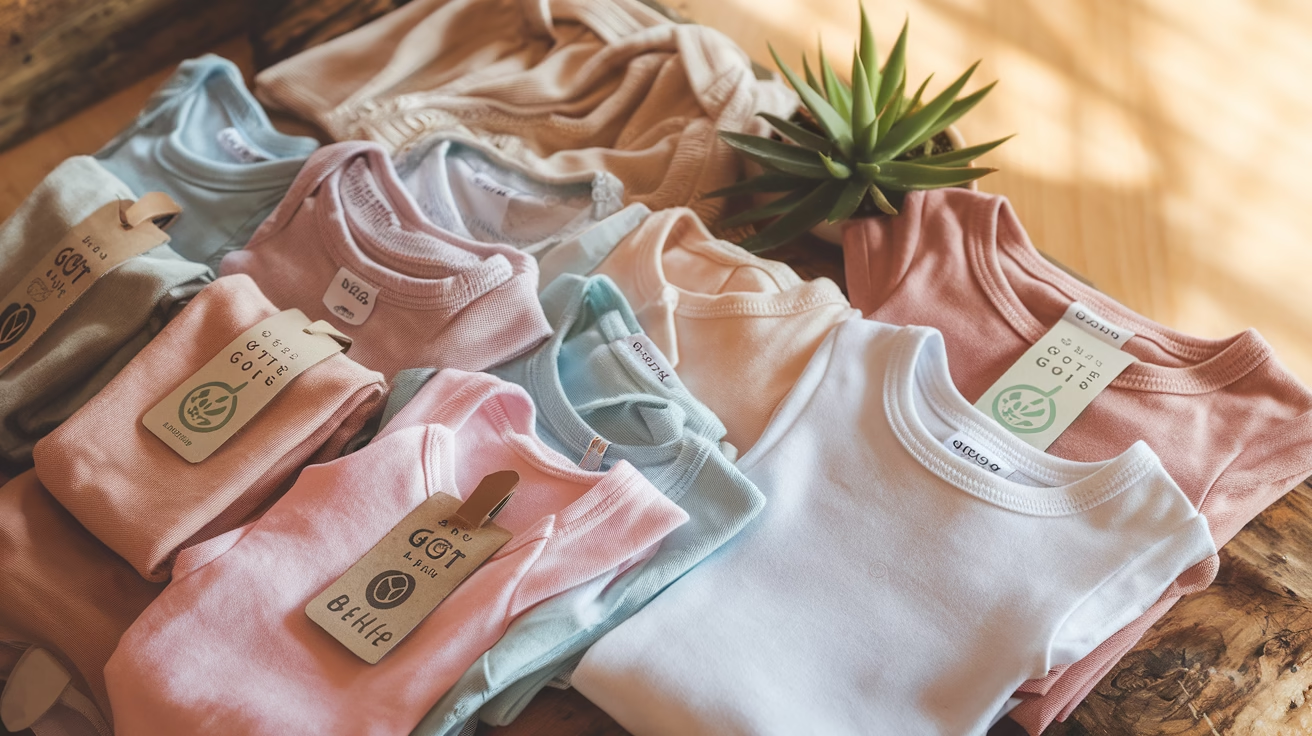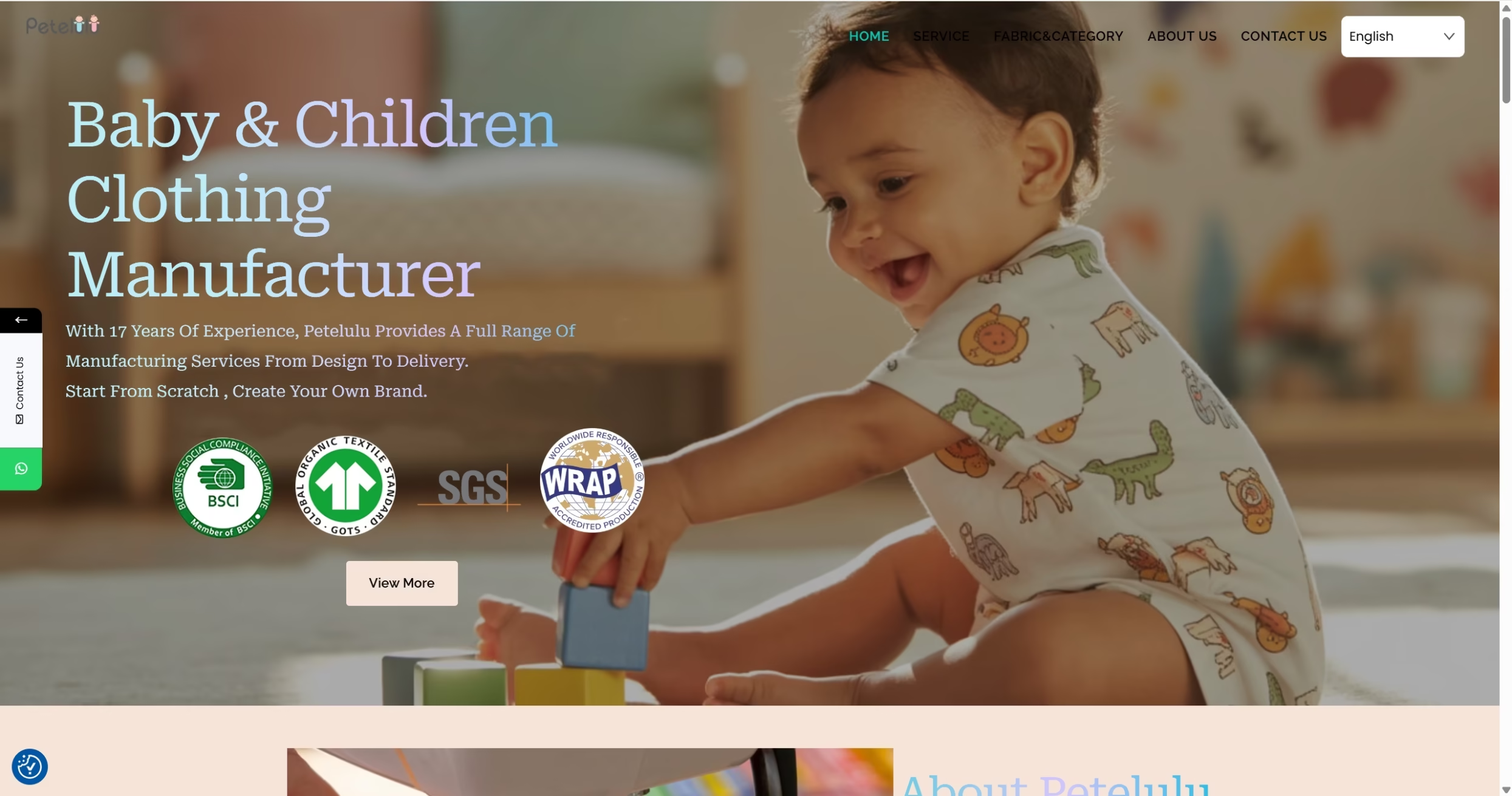Are Affordable Newborn Clothes Safe for Your Baby’s Skin? Insights from Newborn Clothing Manufacturers

Introduction
As a parent, choosing the right clothes for your newborn is one of the first tasks you’ll face. With so many affordable options available, it’s easy to wonder whether these clothes are truly safe for your baby’s delicate skin. After all, your newborn’s skin is sensitive and still developing, so you want to ensure that every item touching it is soft, non-irritating, and safe. In this article, we’ll dive into the key factors that make newborn clothes safe and comfortable. We will also hear directly from newborn clothing manufacturers, who can provide valuable insights into fabric choices, safety standards, and how to pick the best clothing options while sticking to a budget. Let’s explore how you can make an informed decision when shopping for baby clothes, ensuring your baby’s comfort and safety without compromising on affordability.
View more: The Ultimate Guide to Sourcing Eco-Friendly Fabrics for Baby Wear

1. Understanding Your Baby’s Sensitive Skin: What Makes It So Vulnerable?
View More:Top 10 Children’s Clothing Manufacturers to Watch in 2025
Newborn skin is far more delicate than adult skin, and understanding why it’s so vulnerable to irritation can help you make the right clothing choices for your baby. Here’s a closer look at why your baby’s skin requires extra care and attention:
Newborn Skin vs. Adult Skin: Key Differences
Newborn skin is significantly thinner than adult skin, meaning it has a lower barrier to protect against environmental factors like bacteria, pollutants, and even harsh fabrics. Additionally, babies have a higher body surface area relative to their weight, which makes their skin more susceptible to absorbing irritants from the environment. The skin is also more prone to dehydration, making it vulnerable to chafing and other skin issues.
Common Skin Issues in Babies (Eczema, Rashes, Irritation)
Many babies suffer from common skin conditions such as eczema, rashes, and general skin irritation. Eczema, for example, can cause dry, itchy patches of skin that can be exacerbated by certain fabrics. Similarly, new parents often deal with diaper rashes, which can be worsened by rough or synthetic clothing. Choosing clothing that is soft, breathable, and gentle can help minimize these issues and protect your baby’s skin from unnecessary stress.
How Fabrics Can Affect Baby Skin Health
The type of fabric that comes in direct contact with your baby’s skin can make a huge difference in terms of comfort and health. Certain materials, especially those with harsh chemical treatments or rough textures, can cause allergic reactions, rashes, or general discomfort. This is why selecting clothes made from natural, breathable, and hypoallergenic fabrics is crucial for your newborn’s health.
View More:How Bulk Ordering Summer Kids’ Clothing Can Save Your Business Money in 2025

2. The Role of Newborn Clothing Manufacturers in Ensuring Safety
Newborn clothing manufacturers play an essential role in ensuring that the clothes your baby wears are both comfortable and safe. But how do these manufacturers make sure their products meet safety standards? Here’s a look at the crucial steps they take:
Industry Regulations and Standards for Newborn Clothing
In order to protect infants from potentially harmful products, newborn clothing is subject to strict regulations and safety standards. These guidelines cover everything from chemical treatments and dyes to clothing fit and labeling. For example, in the U.S., newborn clothing manufacturers must adhere to the Consumer Product Safety Improvement Act (CPSIA), which sets limits on lead and phthalates in children’s products. Globally, other standards exist, such as the European Union’s REACH regulations, which govern the use of harmful chemicals in clothing.
How Manufacturers Choose Fabrics That Are Safe for Babies
Responsible manufacturers prioritize safety when selecting fabrics for newborn clothes. Most choose natural materials like cotton and wool because they are gentle on the skin and breathable. Manufacturers also make sure their fabrics are tested to ensure they are free from harmful substances like formaldehyde, which is sometimes used in the finishing process. By carefully choosing fabrics that are certified safe, manufacturers ensure that their clothing lines will not irritate delicate baby skin.
Certifications to Look for (e.g., Oeko-Tex Standard 100, GOTS)
When shopping for newborn clothes, it’s important to look for certifications that indicate the clothes have been tested for harmful chemicals. The Oeko-Tex Standard 100 certification is one such label that assures the product has been tested for over 100 harmful chemicals and meets strict safety requirements. Another certification to look for is GOTS (Global Organic Textile Standard), which ensures that the fabric is not only organic but also free from harmful pesticides and chemicals.

3. Fabric Choices: The Best Materials for Safe and Affordable Newborn Clothes
When shopping for newborn clothes, the fabric choice plays a pivotal role in ensuring both safety and comfort. Let’s explore the best fabric options for newborns and how to find safe, affordable clothes for your baby.
Cotton: Soft, Breathable, and Gentle on the Skin
Cotton is often the go-to fabric for baby clothes due to its natural softness and breathability. Unlike synthetic fibers, cotton is gentle on the skin and allows for air circulation, which is crucial in preventing heat rashes or discomfort. Additionally, cotton can absorb moisture, keeping your baby dry and comfortable. It’s also hypoallergenic, making it a great option for babies with sensitive skin.
Organic Fabrics: Benefits of Organic Cotton and Other Natural Fibers
Organic cotton is another excellent choice for newborns because it is grown without the use of harmful pesticides and synthetic fertilizers. Organic fabrics are usually softer than conventionally grown cotton and are less likely to irritate your baby’s skin. Additionally, organic cotton production is more environmentally friendly, making it a sustainable choice for eco-conscious parents. Other natural fibers like bamboo and hemp are also gaining popularity due to their softness, durability, and hypoallergenic properties.
Synthetic Fibers: Pros and Cons for Baby Skin
While synthetic fabrics like polyester and nylon can be cheaper and more durable, they may not be the best option for a newborn’s sensitive skin. These materials are less breathable and can trap moisture, leading to discomfort or irritation. Some synthetic fibers may also contain chemicals like flame retardants or dyes that can be harmful to your baby’s skin. However, if you do choose clothes made from synthetic fibers, look for options that are labeled as hypoallergenic and free from harmful substances.
How to Spot Hypoallergenic Fabrics
Hypoallergenic fabrics are designed to minimize the risk of allergic reactions or irritation. To ensure you’re purchasing hypoallergenic clothes, check for certifications such as Oeko-Tex Standard 100, which guarantees the absence of harmful chemicals. Fabrics like organic cotton, bamboo, and silk are often considered hypoallergenic due to their natural properties. Avoid clothes with rough seams or tags that could cause friction on your baby’s skin.

4. Are Affordable Newborn Clothes Made with Safe Materials?
When shopping for newborn clothes, parents often face the dilemma of choosing between affordability and quality. While it’s tempting to opt for budget-friendly options, it’s important to ensure that lower price tags don’t mean compromising on safety. Here’s a look at how affordable newborn clothes can still be safe for your baby’s skin.
Why Price Doesn’t Always Correlate with Quality
It’s a common misconception that affordable clothing is necessarily poor in quality. Many newborn clothing manufacturers are able to produce safe, soft, and high-quality garments at lower prices by streamlining production processes, using less expensive materials, or buying in bulk. Therefore, the price of a garment isn’t always a reflection of its safety. With the right knowledge and awareness, parents can find clothes that are both budget-friendly and gentle on their baby’s skin.
How to Check if Affordable Clothes Meet Safety Standards
The key to purchasing safe and affordable clothes lies in knowing what to look for. Look for product labels and certifications that confirm the clothes meet safety standards. Certifications such as Oeko-Tex Standard 100, GOTS (Global Organic Textile Standard), and CPSIA compliance indicate that the clothing has been rigorously tested for harmful chemicals and unsafe substances. Even affordable brands can meet these standards by ensuring that their materials and production processes are thoroughly vetted.
Additionally, many brands that offer affordable newborn clothes make safety a priority by using safe fabrics, simple designs without small removable parts (like buttons), and soft finishing that ensures there are no harsh seams that could irritate your baby’s skin.
The Hidden Dangers in Low-Cost Baby Clothes
Despite the availability of affordable baby clothing options, some items may pose risks due to poor manufacturing practices. Low-cost clothes might be produced with cheap synthetic fabrics, low-quality dyes, or inadequate testing for chemical residues. These substances can lead to skin irritation, allergic reactions, or even respiratory issues if inhaled. Some poorly made clothes may also have rough edges or tags that could cause physical irritation or discomfort for the baby.
To avoid these hidden dangers, ensure that affordable clothes come from reputable manufacturers who prioritize safety and comfort, even in their budget-friendly lines.

5. Tips for Parents: How to Select Safe and Affordable Baby Clothes
As a parent, you want the best for your baby, and choosing the right clothes is a crucial part of that. With so many options available, it can be overwhelming to find clothes that balance safety and affordability. Here are some practical tips to help you make the best choice when shopping for newborn clothes:
Look for Certified Fabrics and Materials
Always prioritize fabrics that are tested and certified for safety. Certifications like Oeko-Tex Standard 100 and GOTS (Global Organic Textile Standard) are indicators that the clothing has been thoroughly tested for harmful chemicals and is safe for babies. These certifications guarantee that the materials used are free of pesticides, formaldehyde, and other potentially harmful substances, making them ideal for sensitive skin.
Prioritize Comfort and Fit Over Aesthetics
While it’s tempting to choose clothes based on their cute designs, it’s more important to focus on comfort and fit. Avoid clothes with tight elastic bands, uncomfortable seams, or labels that can rub against the skin. Instead, opt for clothes with simple, soft construction, ensuring that the fit is neither too tight nor too loose. Loose-fitting clothes are typically more comfortable for babies, providing enough room for them to move freely without causing irritation.
Avoid Harsh Chemicals and Dyes in Baby Clothes
Another important consideration is the use of chemicals and dyes. Many low-cost clothing items may contain harsh dyes or chemical treatments that can cause irritation to sensitive skin. Look for clothing that is labeled as free of azo dyes, flame retardants, and other potentially harmful chemicals. Opting for clothes made from organic or untreated fabrics will help minimize the chances of skin irritation.
The Importance of Soft Seams and Labels
Even if the fabric is soft, rough seams or uncomfortable labels can still cause irritation. Check for clothes that have no labels or tags inside, or those that have printed labels that won’t rub against your baby’s skin. Soft seams, such as those with no exposed edges, prevent chafing and discomfort. These little details can make a big difference in your baby’s comfort level throughout the day.

Conclusion
In conclusion, affordable newborn clothes can indeed be safe for your baby’s delicate skin, provided you choose wisely. The key lies in understanding the fabrics used, the certifications to look for, and the safety standards that manufacturers adhere to. By selecting clothes made from soft, hypoallergenic materials, checking for certifications like Oeko-Tex and GOTS, and avoiding harsh chemicals and dyes, you can ensure that your baby remains comfortable and safe.
Parents should not feel pressured to overspend when it comes to newborn clothing; there are plenty of affordable options that meet the necessary safety standards. It’s important to remember that your baby’s comfort and skin health come first, and with a little knowledge and attention to detail, you can find the perfect balance between cost and quality. Happy shopping, and may your little one feel as comfortable as they look in their new clothes!
FAQs
1. Can synthetic fabrics be safe for newborns?
While some synthetic fabrics are less breathable and may cause irritation, some hypoallergenic synthetics are designed for baby clothing. Always look for certifications like Oeko-Tex Standard 100 to ensure the fabric is free from harmful chemicals.
2. Is organic cotton better for newborn skin than regular cotton?
Organic cotton is generally softer and grown without harmful pesticides, making it a safer and more comfortable choice for newborns. However, regular cotton that is unprocessed can still be safe if it’s free from chemicals.
3. How do I know if a baby clothing brand is reputable?
Look for brands that provide transparency regarding their production processes, use certified safe fabrics, and adhere to safety standards like CPSIA or Oeko-Tex. Reviews and recommendations from other parents can also help.
4. Are there specific dyes I should avoid in baby clothes?
Avoid azo dyes and chemical dyes, as these can irritate baby skin. Opt for clothes labeled as free from harmful dyes or choose natural fabric dyes, which are typically safer.
5. Can I wash newborn clothes before use?
Yes! It’s recommended to wash all new baby clothes before they come into contact with your baby’s skin. This helps remove any chemical residues, dirt, or irritants that might be present from the manufacturing process.
Petelulu is Your Best Partner for Starting Your Kids’ Clothing Line
If you’re looking for a reliable clothing manufacturer for your children’s clothing line, Appareify will be your top choice. Here is why we can relieve stress for your kids’ clothing business:

Custom Children’s Clothing Manufacturer
Appareify is a leading clothing manufacturer that has assisted many businesses with their own range of bespoke clothing. We can create children’s clothing tailored for your style and material needs
Experienced Production & Team
Partner with Appareify and benefit from our years of clothing manufacturing expertise. Our professional design and production experts can easily turn your business ideas into reality.
Sustainable Commitment
We use biodegradable materials and fabrics to turn your ideas into reality sustainably. You’ll get children’s clothing that is friendly to the environment.
About the author
Xhiney, founder of Petelulu, brings over 20 years of experience in children’s wear design, production, and international trade. A contributor to Children’s Wear and Junior magazines, Xhiney has spent 17 years working with high-end children’s wear brands in Europe and the U.S., offering expert insights and support.
